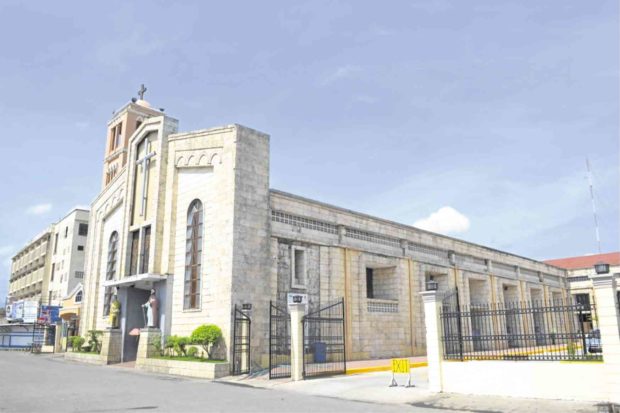
Ormoc City in Leyte has embarked on heritage conservation and promotion that focuses not only on its cultural and natural patrimony but its history of resilience and fortitude amid typhoons and earthquakes.
City leaders led by Mayor Richard Gomez said they were developing a tourism program anchored on Ormoc’s natural and historical heritage. To kick off the program, the local government recently finished a cultural heritage mapping project (CMP) under the guidance of the University of Santo Tomas’ (UST) Center for Conservation of Cultural Property and Environment in the Tropics led by UST professor and former GSIS (Government Service Insurance System) Museum director Eric Zerrudo.
Ormoc has had a stark record of disasters, especially beginning with Tropical Storm “Uring” in 1991 in which more than 8,000 people died.
In 2013, the city was hit by the strongest typhoon ever to hit the earth in recorded history—Supertyphoon “Yolanda” in 2013, which wiped out Ormoc.
And in 2017, 6.5 magnitude earthquake damaged several sites and properties.
The city now seeks to rehabilitate its image and reinvent itself by banking on heritage-based developments based on data gathered from CMP.

CMP yielded significant data about Ormoc’s rich history and natural endowments.
Ogmuc, as Ormoc was previously called, is actually home to seven waterfalls and three lakes.
It has vast sugarcane and pineapple plantations of the sweet Formosa variety.
Ormoc also has one of the largest geothermal power plants in the world, and a number of significant structures from the 19th to the early 20th centuries.
Ancient
It is also an ancient settlement and an important trading post during the precolonial times as evidenced by gold ornaments and ceramic sherds unearthed by famed archeologist H. Otley Beyer during the American period and the accidental discovery of artifacts such as celadon plates by residents.
The city was established as a Jesuit mission in 1597, became a parish around 1630, transferred to the Augustinians when the Jesuits were expelled from the country in 1768, became a visita (mission station) of Palompon soon after until its independence in 1834.
But it was not until 1839 that a parish priest or missionary was assigned in the then town of Ormoc in the name of Don Juan Nepomuceno Tecson.
Mayor Gomez said he asked UST to help Ormoc undertake the CMP because he would like to know the real culture of Ormoc and have a better understanding of its people and heritage.
He said the project which was borne out of his plan to convert the 1947 Old Ormoc City Hall into a museum was also undertaken to educate the residents of their rich heritage.
Gomez explained the CMP date would be used for the planned museum plus a book project so that the residents would be better informed about their heritage.
Gomez said he would like to see the CMP date integrated into the curriculum of the city schools as part of the local history thrust of the Department of Education.
Estrella Serafica Pangilinan, chair of the Ormoc Festival and Cultural Foundation, said the CMP findings would be a source of pride among natives and residents of the city.
Postwar church
Aside from the old city hall and the Puente de la Reina which was completed in 1865, the city also takes pride of its postwar church dedicated to Saints Peter and Paul, which is a presumed important cultural property since it is more than half a century old.
An early American period postcard shows the older, prewar church with a stone and wood façade and a bahay-na-bato-like convent with a rounded structure at the back which could be a watchtower since the area around the poblacion was fortified from the 17th to the 18th centuries due to Muslim pirate raids.
The older church was destroyed during the war and the only remnant of the old structure are the ruins of the watchtower located on what is now Aviles Street.
Curiously, two of the three bells that hung at the church belfry are way older than the church itself.
One is dedicated to “San Pransysco Xabyer” (Saint Francis Xavier) dated 1829 and the second is dated either 1863 or 1883 and dedicated to the Nuestra Señora de la Concepcion de Baibai which was most probably a donation from the parish of Baybay, Leyte.
The third bell is also of significance since it was casted by the famous Fundacion de Hilario Sunico in Manila in 1929 and was a donation from a resident named Lucia Codilla.
Other important structures in the city include the Serafica ancestral house in Barangay Concepcion and the mansion of Dominador Tan, the former congressman of Leyte’s fourth district who was instrumental in Ormoc’s city hood in 1947.
The prewar Tan house became the headquarters of the Japanese forces in Leyte. It was destroyed during the Battle of Ormoc Bay in 1944.
Another discovery of the UST-guided CMP was the city’s own version of the dance “jota” called “La Jota Ormocana.”
At the closing program of the citywide CMP, Mayor Gomez underscored the importance of history and
heritage saying, “We always have to learn to look back.” –CONTRIBUTED

